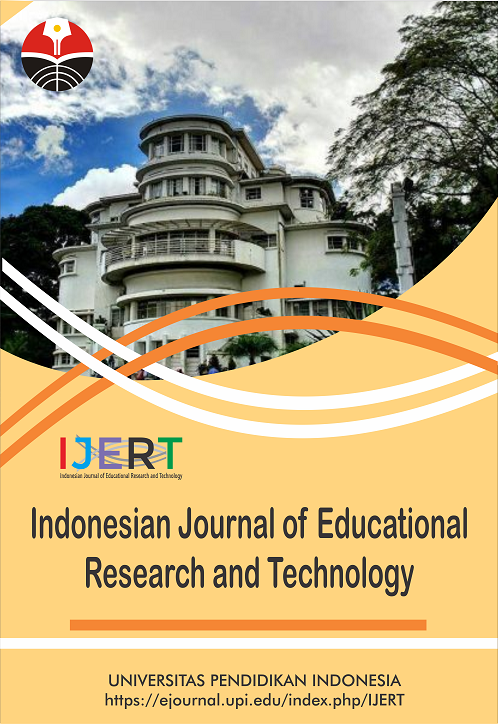Motivation and ICT in Secondary School Mathematics using Unified Theory of Acceptance and Use of Technology Model
Abstract
Mathematics is a special subject that cut across every other subject and every aspect of human life and serves as a clue in solving real-life problems. Teaching mathematics with Information and Communication Technology (ICT) materials might bring tremendous progress in the field of mathematics learning. This is activity-based which makes all students in mathematics class participate fully and contribute to learning. The opinion of secondary school students on ICT use, what is expected from them, and the motivation encountered in mathematics class was investigated. Three hundred (300) secondary school II learners were selected randomly from six secondary schools in Educational District II in Lagos state. The instrument used was based on Mathematics Teaching with ICT (MTICT), this was divided into different sections Student Perceived Performance Expectancy, Effort Expectancy, Social Influence, Facilitating Conditions, and Student Motivation. The data were analyzed with percentages and mean. From the result, the use of ICT in teaching secondary school mathematics enhanced the performance expectancy, create more motivation and the social influence from peers, friends, colleagues, and society members contribute immensely to the encouragement of the student in ICT use for studying mathematics. Therefore, ICT should be used in secondary school mathematics teaching.
Keywords
Full Text:
PDFReferences
Abramovich, S., Grinshpan, A. Z., and Milligan, D. I. (2019). Teaching mathematics through concept motivation and action learning. Hindawi; Education Research International, 2019, 1-13.
Ajayi, I.A. and Ekundayo, H.T. (2009). The application of Information and communication in Nigerian schools. International NGO Journal, 4(5), 281-286
Akinoso S.O (2016). Effect of concrete-representational abstract institutional strategy on senior secondary school students’ attitude to mathematics. Ife Journal of Theory and Research in Education, 17(1), 73-81.
Akinoso S.O, Agoro A.A and Alabi O.M (2017). Innovation and entrepreneurship: A panacea to industrial revolution through science, technology, engineering and mathematics education. Journal of Science, Technology Mathematics and Education, 13(2), 153-161.
Akinoso S.O. (2015). Teaching mathematics in a volatile, uncertain, complex and ambiguous (vuca) world: the use of concrete-representational-abstract instructional strategy. Journal of the International Society for Teacher Education, 19(1) 97-107.
Attuquayefio S. (2014). Using the UTAUT model to analyze students’ ICT adoption. The International Journal of Education and Development Using Information and Communication Technology, 10(3), 75-86.
Bagon, S. and Vodopivec J. L. (2016). Motivation for ICT and pupils with learning difficulties. International Journal of Emerging Technologies in Learning, 11(10), 70-75.
Birch and Irvine, V. (2009). Preservice teachers' acceptance of ICT integration in the classroom: applying the UTAUT model. Educational Media International, 46(4), 295–315.
Gasaymeh, A. M. M., and Qablan, B. M. (2013). SMS as out-of-class, student-instructor interaction tool: A case of jordanian graduate students' perceptions and usage. International Education Studies, 6(8), 147-160.
Hanafi, H. F.. Said, C. S., Wahab, M. H., and Samsuddin, K. (2017). Improving students’ motivation in learning ICT courses with the use of a mobile augmented reality learning environment. IOP Conference Series: Materials Science and Engineering, 226(1), 012114.
Mtebe J. S., Mbwilo B. and Kissaka M. M. (2016). Factors influencing teachers' use of multimedia-enhanced content in secondary school in Tanzania. International Review of Research in Open and Distributed Learning, 17(2), 65-84
Papastergiou, M. (2009). Digital game-based learning in high school computer science education: Impact on educational effectiveness and student motivation. Computers and Education, 52, 1-12.
Passolunghi M. C., and Lanfranchi S. (2012). Domain-specific and domain-general precursors of mathematical achievement: A longitudinal study from kindergarten to first grade. The British Journal of Educational Psychology, 82(1), 42–63.
Venkatesh, V., Morris, M. G., Davis, G. B., and Davis, F. D. (2003). User acceptance of information technology: toward a unified view. MIS Quarterly, 27(3), 425-478.
Yusuf, M. O. (2005). Information and communication technologies and education: Analyzing the Nigerian national policy for information technology. International Education Journal, 6(3), 316-321.
DOI: https://doi.org/10.17509/ijert.v3i1.47183
Refbacks
- There are currently no refbacks.
Copyright (c) 2022 Universitas Pendidikan Indonesia

This work is licensed under a Creative Commons Attribution-ShareAlike 4.0 International License.







.png)




